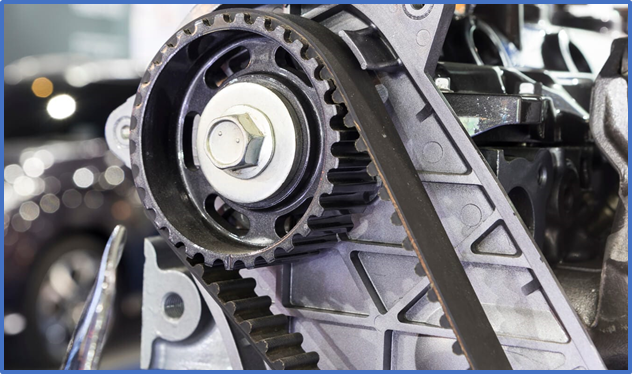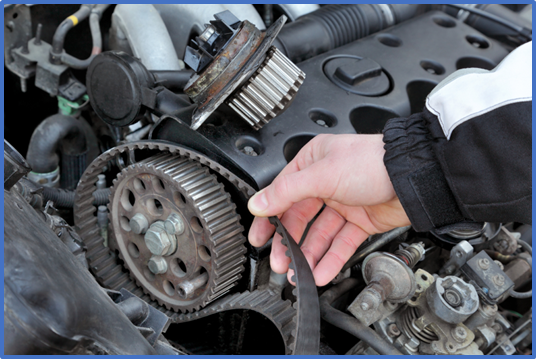How to Diagnose a Bad Timing Belt | Bernardi Parts

We all know how important your engine is to your vehicle. It is the heart of your Honda. And, just like an irregular heartbeat can affect your overall health, the same can be said for your engine—timing is everything. Keeping your engine running smoothly is vital, and there is no more important part than your Honda’s timing belt.
Here are the key signs of a bad timing belt you should watch for. We’ll also give you tips so you know with confidence when your timing belt needs to be replaced.
How a Timing Belt Works
Like a bicycle chain, the timing belt synchronizes critical components within your Honda's engine, including the camshaft and crankshaft. Without this rubber belt, your engine’s valves would fall out of sync, and your Honda would stop running.
Heat and aging can lead to clear signs the timing belt is going bad, such as degradation or potential breakage. This is why it’s important to keep an eye on your Honda’s timing belt and watch for tell-tale symptoms that it might be damaged and in need of replacement.

Signs of a Damaged Timing Belt
- Noises Coming from Your Engine: A ticking noise from your engine is one of the primary symptoms of a bad timing belt. Low oil pressure and improper engine lubrication are common timing belt-related issues.
- Engine Misfires: Misfires and other changes in your Honda engine’s firing rate are clear signs of a damaged timing belt. A worn-out timing belt can cause the engine’s cylinders to open and close out of sync.
- Check Engine Light is On: A damaged timing belt can cause your Check Engine light to come on. If your light is on and you’re noticing any of these other signs, your timing belt is a good place for your mechanic to start troubleshooting.
- Rough Idling of the Engine: Timing belts contain teeth designed to grip gears during engine operation. A damaged timing belt can slip, resulting in a rough idle and potentially more frequent stalling.
- Engine Starts Smoking: Smoke from your engine is never a good sign. If you see smoke under the hood, it could be due to a damaged timing belt that disrupts the engine’s intake and exhaust cycles, causing serious engine damage.
Replacing a Damaged Timing Belt
Once you determine that your Honda’s timing belt is damaged, the next step is to buy and install an OEM replacement—before further engine damage occurs.
Finding all the parts you need is easy with Bernardi Parts Honda. Whether you’re looking to change your timing belt (you can select your model and year on the next page) or need to replace another OEM Honda part, we have you covered. For more information, send us a message or call us at 800-924-1884.
Related Articles